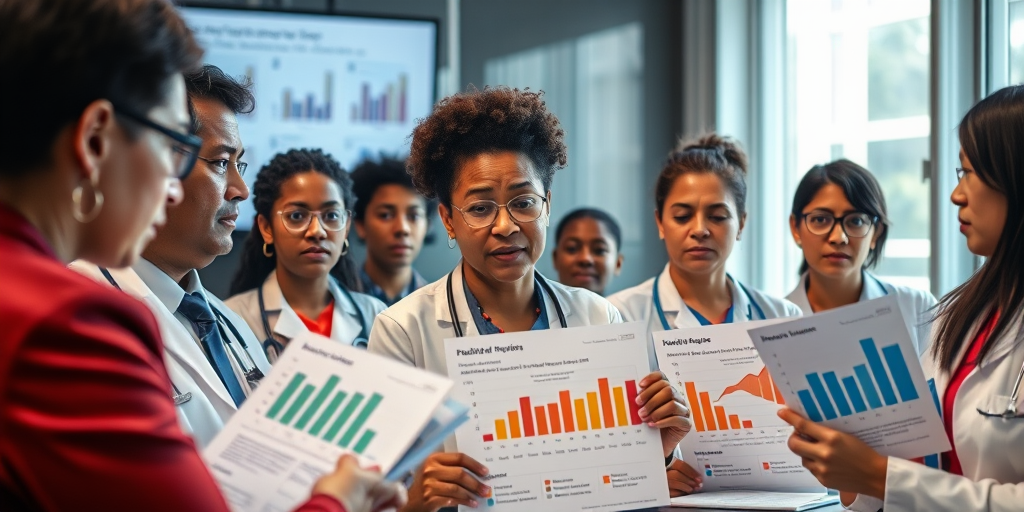Health Equity & Access Weekly Roundup: Addressing Persistent Disparities and Systemic Gaps
Recent analyses and studies have underscored several challenges and inequities in health access and outcomes across different demographics in the United States. These insights are crucial for understanding how systemic issues continue to affect minority groups and what measures might be necessary for promoting health equity.
Racial Disparities in Ovarian Cancer Survival
New findings have revealed significant racial disparities in ovarian cancer survival rates among Asian American, Native Hawaiian, and Pacific Islander (AANHPI) groups. Despite a general decline in mortality rates over the past 21 years, Native Hawaiian and Southeast Asian women continue to have worse outcomes compared to their East Asian counterparts.
Dr. Cathy Eng, a specialist in oncology, emphasized the importance of disaggregating data to uncover such disparities. “It is crucial that healthcare providers consider these variations within racial and ethnic groups to implement targeted and effective interventions,” she stated.
For residents in regions with significant AANHPI populations, like San Francisco, this information serves as a call to action for healthcare systems to engage in outreach and community-specific programs aimed at improving survival rates among these subgroups.
Mental Health Parity Setbacks
Ali Khawar, a former key official at the Employee Benefits Security Administration, has raised concerns about federal actions that have hindered mental health parity progress. Under the Trump administration, budget reductions and a lack of clear strategy have debased efforts to achieve equity in mental health and substance use treatment.
Given the increasing prevalence of mental health issues exacerbated by the COVID-19 pandemic, these setbacks present severe implications. Local mental health advocates are urging the current administration to adopt a more structured and publicly accountable approach to addressing these disparities.
Challenges in Pulmonary Arterial Hypertension Care
A survey of women with pulmonary arterial hypertension (PAH) reveals suboptimal care experiences, highlighted by dismissive attitudes from healthcare providers and reliance on digital sources for accurate information. These challenges are particularly concerning for women of childbearing age dealing with infertility risks associated with PAH.
In Houston, where a noteworthy segment of the population suffers from PAH, this situation underscores the need for healthcare providers to adopt more empathetic and informed practices and ensure comprehensive education on PAH-related health risks.
Prolonged ED Waits for Minors in Crisis
Recent data shows a troubling trend of prolonged emergency department (ED) waits for minors experiencing mental health crises, with one in three waiting over 12 hours. This gap highlights systemic inadequacies exacerbated by the pandemic, necessitating urgent reforms to pediatric mental health care infrastructure.
Experts such as Dr. Rajesh Patel from the Children’s Hospital of Philadelphia advocate for policy reforms, expanded telehealth, and psychiatric urgent care models as essential steps to address these delays. For communities like New York City, where mental health resources are integral, such changes could streamline care and significantly improve outcomes.
Racial Inequities in Dialysis Outcomes
The quality of dialysis facilities remains a critical factor in patient outcomes, yet geographic proximity often dictates facility choice, leaving Black patients at a disadvantage. This inequity suggests the need for policy interventions to ensure higher-quality care access, particularly in places with high African American populations, such as Detroit.
Local advocates argue for the expansion of high-quality centers or incentives to relocate underperforming facilities, aspiring to close the racial disparity gap in healthcare services.
Drug Access Challenges
A noteworthy report revealing over 40% of the US population faces financial barriers to accessing prescribed medications has spotlighted the critical issue of drug affordability. This challenge is more pronounced for low-income and uninsured sectors, emphasizing the urgent need for policy interventions to make medications more accessible.
In areas like West Virginia, which grapples with high poverty rates, improved drug access could dramatically enhance residents’ quality of life and health outcomes.
Community Oncology Braces for IRA Impact
The Inflation Reduction Act’s impact on drug pricing poses challenges for community oncology, potentially affecting financial stability and patient care access. These concerns resonate deeply within cancer treatment hubs, like Los Angeles, where local practices could face operational hurdles without strategic mitigation efforts.
Healthcare leaders are encouraged to collaborate and develop sustainable strategies to navigate these challenges effectively, safeguarding community health resources.
Conclusion
The Health Equity & Access Weekly Roundup highlights several critical issues with stark implications for diverse communities across the United States. From addressing ovarian cancer disparities to reforming mental health care infrastructures, these insights shed light on the urgent need for policy reforms and targeted interventions.
Communities are urged to actively participate in public forums and engage with local policymakers to advocate for necessary changes that will ensure equitable health access for all residents, fostering healthy, robust communities nationwide. For more information on local initiatives and resources, community members can contact their regional health departments or local health advocacy groups.







